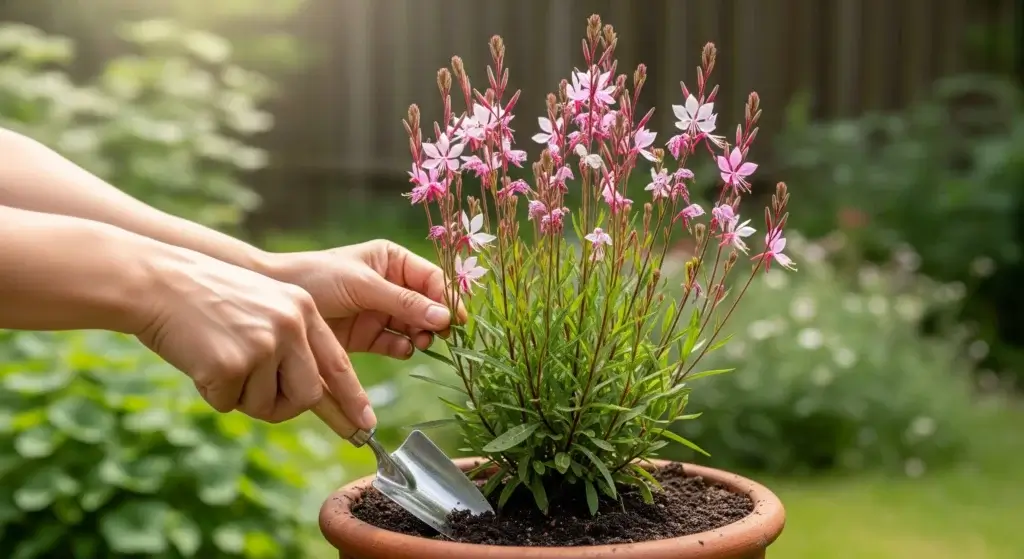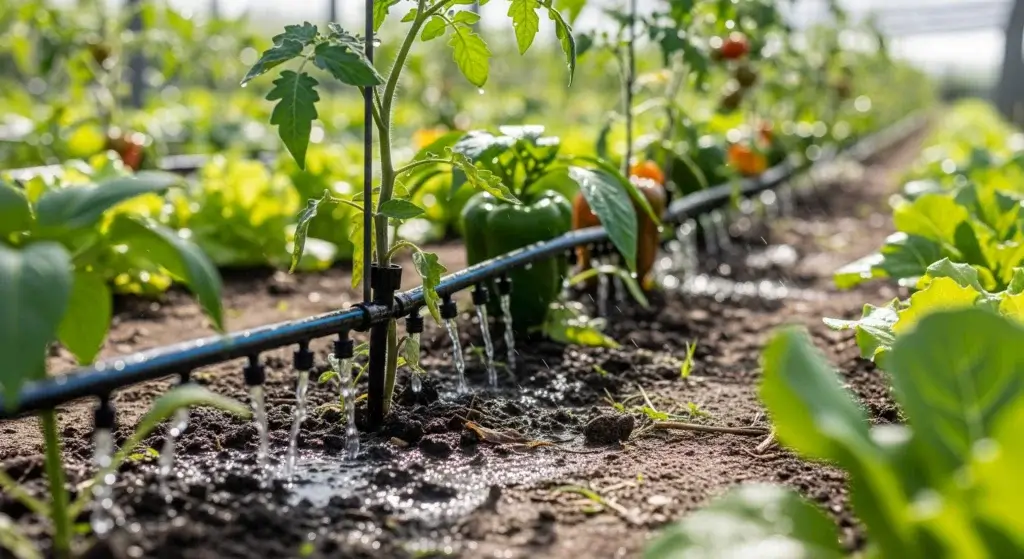
Snake plants, or Sansevieria, are well-known for their resilience and low-maintenance nature.
They’re not just decorative; they’re also fantastic air purifiers.
However, mastering their care involves getting one crucial thing right: watering.
In this comprehensive guide, we’ll delve into the art of watering snake plants to ensure these sturdy beauties thrive and remain content in your home.
Importance of Proper Watering for Snake Plant
Proper watering plays a crucial role in maintaining the health and vitality of snake plants.
These resilient plants can endure periods of neglect, but the balance between overwatering and underwatering is critical to avoid potential problems like root rot or dehydration.
- Read also: Snake Plant Care Indoor for Thriving Bliss
- Read also: Why Your Snake Plant Leaves Are Curling
Root health
Overwatering can suffocate the roots, leading to rot and decay.
On the flip side, underwatering deprives the roots of essential moisture, causing them to dry out and potentially die off.
Leaf quality
Incorrect watering can directly impact the leaves.
Too much water can cause them to turn yellow or become mushy, while too little water may lead to wilting or drooping leaves.
Growth and development
A balanced watering schedule ensures proper growth and development.
When the plant receives the right amount of water, it can focus on healthy leaf production and even flowering.
Resilience
Finding the sweet spot in watering frequency helps the snake plant maintain its resilience.
It becomes better equipped to withstand environmental changes and stressors.
Maintains optimal soil conditions
Proper watering helps to keep the soil well-aerated, allowing oxygen to reach the roots and preventing compaction. This is important for healthy root function and nutrient uptake.
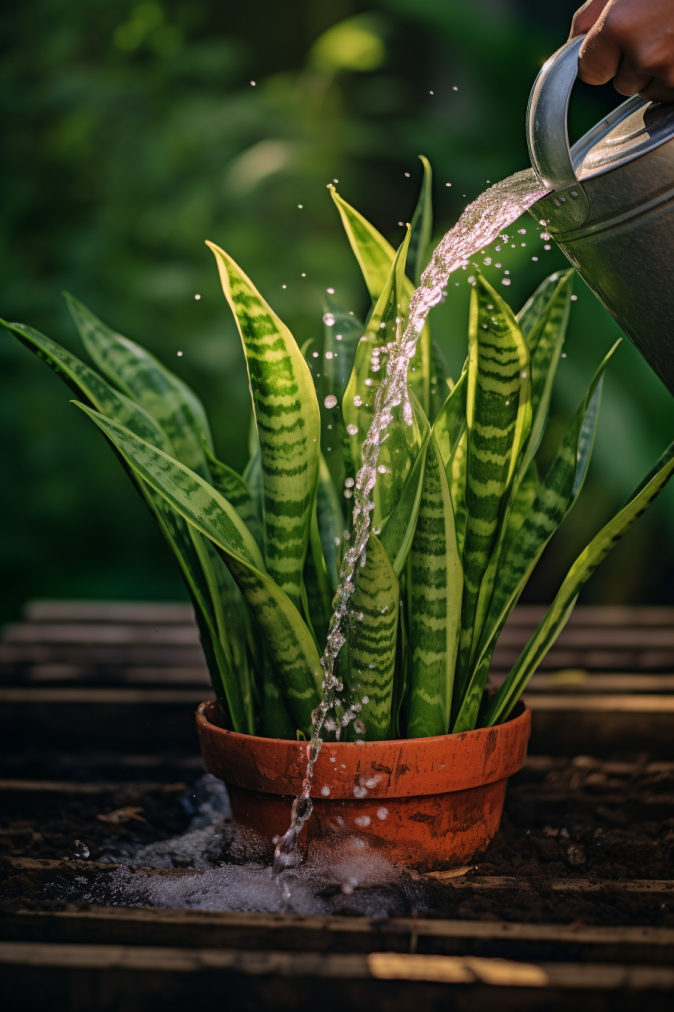
How Often to Water a Snake Plant?
Snake plant watering schedule still needs to be adjusted based on various factors, including whether they’re indoors or outdoors. Here’s a guide:
Indoors watering frequency
In general, you’ll water your indoor snake plant every 2-4 weeks, letting the soil dry completely between waterings. However, this can vary depending on:
- Season: Water less frequently in winter (every 5-7 weeks) as the plant grows slower and the light is weaker. Increase the frequency in spring and summer (every 1-2 weeks) when growth is more active and temperatures rise.
- Light: Plants in brighter light may need to be watered slightly more often than those in low light.
- Pot size: Smaller pots dry out faster than larger ones, so adjust the frequency accordingly.
- Soil mix: Well-draining soil, like cactus mix, dries faster and lets you water more frequently compared to heavier mixes.
- Technique: Use any of the mentioned techniques like the finger test, moisture meter, or bottom watering. Avoid getting water on the leaves, especially the crown, as it can cause rot.
Outdoors watering frequency
Outdoor snake plants can generally be watered less frequently than indoors due to increased drainage and natural rainfall.
Aim for every 4-8 weeks, again letting the soil dry completely between waterings.
Adjust based on:
- Season: Water less often in cooler months (every 6-8 weeks) and more frequently in hotter months (every 2-4 weeks) when the soil dries out faster.
- Rainfall: Adjust your watering schedule based on how much rain your area receives. If it rains heavily, hold off on watering.
- Drainage: Plants in well-draining soil will need to be watered less than those in heavy soil.
- Technique: You can use similar techniques as indoors like the finger test or bottom watering. However, outdoor plants exposed to rain may not need additional watering unless the soil has been consistently dry for an extended period.
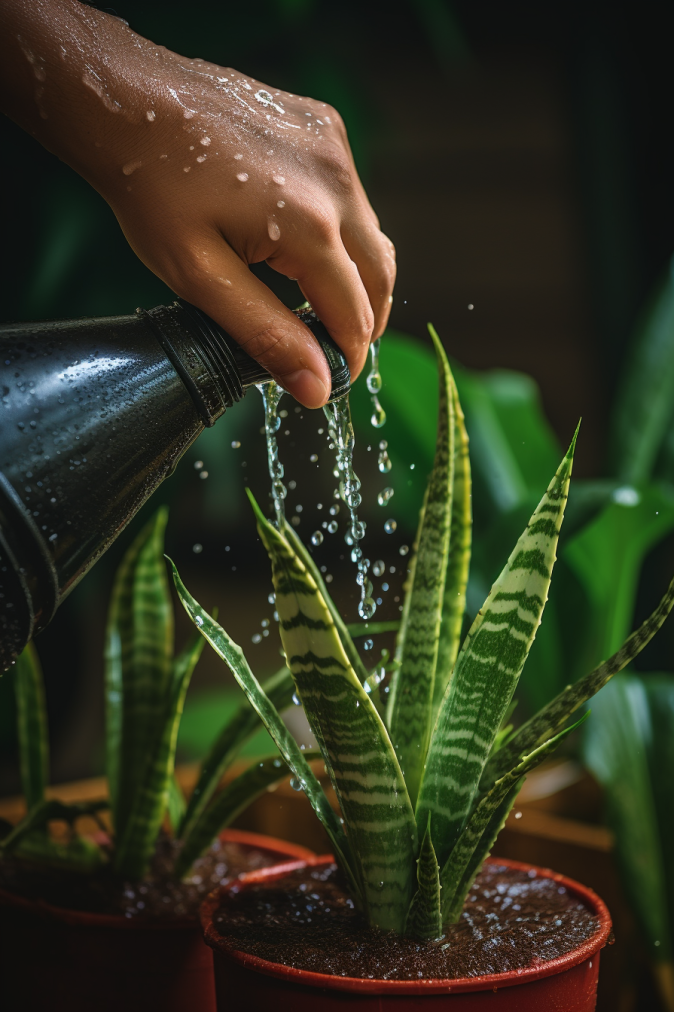
Signs Your Snake Plant is Underwatered and Overwatered
Underwatered:
- Wilting or drooping leaves.
- Dry, parched soil.
Overwatered:
- Yellowing or mushy leaves.
- Soggy or foul-smelling soil.
How Do I Know If My Snake Plant Needs Water?
Visual indications
Leaves
- Drooping: While some drooping can occur naturally, especially in older leaves, significant drooping across the plant is a sign of thirst.
- Wrinkling: Dry, wrinkled, and papery leaves indicate dehydration.
- Color: Normally vibrant green leaves turning dull, grayish, or yellowish could be due to underwatering.
- Browning: Dry, crispy brown leaf tips or edges are classic signs of underwatering.
Stunted growth
If your snake plant hasn’t put out new growth for a long time, it might be lacking water.
Soil indications
- Moisture: Insert your finger about 2 inches into the soil. If it feels completely dry and dusty, watering time has arrived.
- Color: Dry soil will appear light and dusty, while damp soil will be darker and slightly clump together.
- Pulling away: If the soil pulls away from the sides of the pot when you lift it, it’s likely dry.
Other indications
- Pot material: Clay pots dry out faster than plastic pots, so adjust your watering schedule accordingly.
- Season: Snake plants need less water in winter than in summer due to slower growth.
- Light: Plants in brighter light may need to be watered more often than those in low light.
How Snake Plants Hold Water?
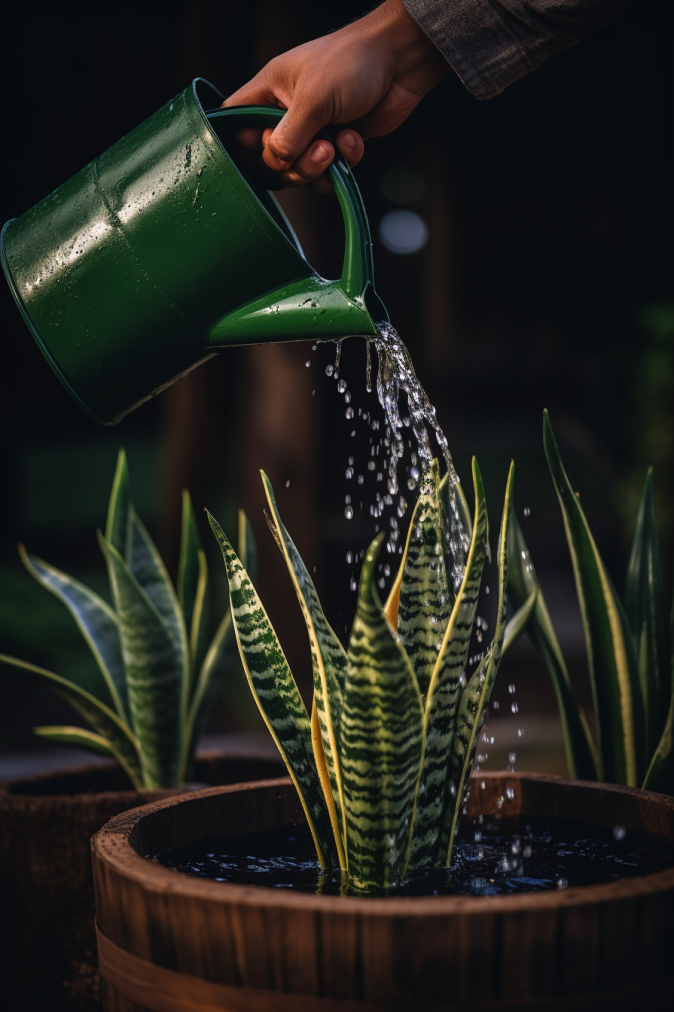
Snake plants possess several clever adaptations that allow them to efficiently hold water, making them incredibly drought-tolerant and perfect for those who like to forget to water their plants occasionally.
Here’s how they do it:
Thick, fleshy leaves
Unlike many other plants, snake plants have succulent-like leaves.
These leaves are thick and fleshy due to specialized tissues called water-storage parenchyma.
These tissues act like tiny water balloons, storing significant amounts of water within the leaves that the plant can tap into during dry periods.
Crassulacean Acid Metabolism (CAM)
Snake plants utilize a unique photosynthetic pathway called CAM.
Instead of opening their stomata (tiny pores on leaves) during the day like most plants, snake plants open them primarily at night.
This clever trick minimizes water loss through evaporation during the hottest and driest parts of the day.
Waxy cuticle
The surface of snake plant leaves is covered in a waxy cuticle, which acts like a waterproof barrier.
This waxy layer further reduces water loss by preventing evaporation from the leaf surface.
Efficient root system
Snake plants have relatively shallow but fibrous root systems that spread wide.
This helps them maximize water absorption from the soil, even in dry conditions.
Reduced growth in dry periods
When water is scarce, snake plants prioritize survival overgrowth.
They slow down their metabolic processes and growth rate, further conserving the water they have stored.
How Long Can A Snake Plant Go Without Water?
Snake plants are resilient and can withstand periods without water due to their water-storing abilities.
Generally, they can survive for about 2 to 6 weeks without water, depending on factors like environmental conditions, humidity levels, and the plant’s health.
Their capacity to store water in both their leaves and roots allows them to endure and thrive in environments where water availability is limited.
However, while they can tolerate dry spells, it’s essential to provide water when needed to maintain their health and vitality.
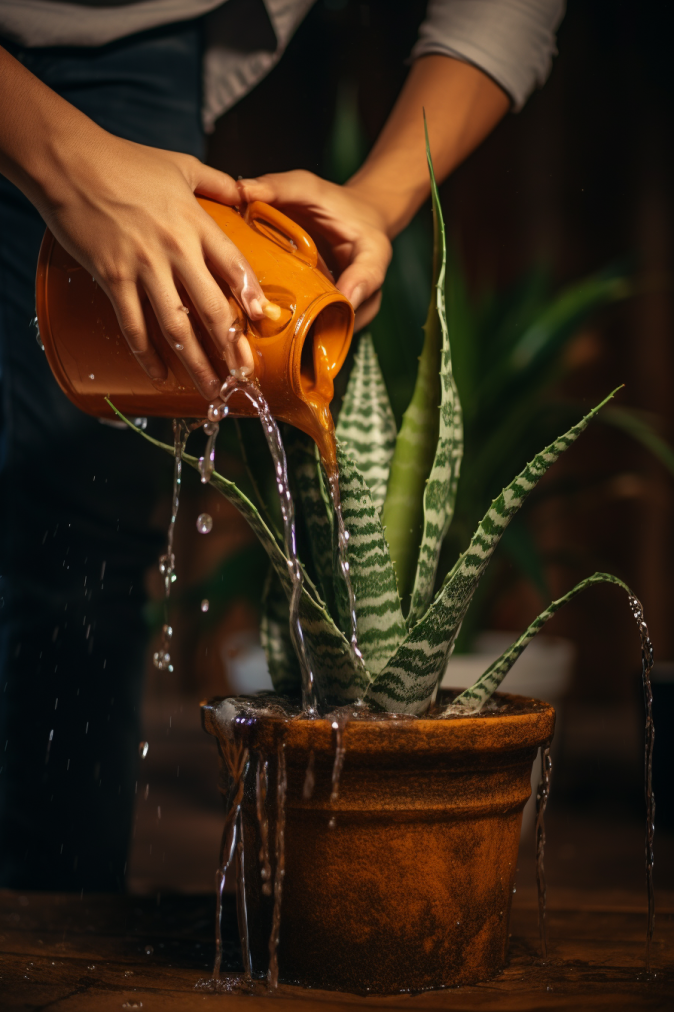
What are Common Watering Mistakes?
Common watering mistakes when caring for snake plants include:
Overwatering
Providing excessive water leads to waterlogged soil, which can cause root rot and suffocate the roots.
Inconsistent watering
Irregular watering schedules can stress the plant. Fluctuating between dry and soggy soil conditions can impact its health.
Using the wrong pot or soil
Potting containers without drainage holes or using soil that retains too much moisture can lead to water accumulation, risking root problems.
Ignoring environmental factors
Neglecting to adjust watering frequency based on seasonal changes, humidity levels, or temperature variations can impact the plant’s water needs.
Not checking soil moisture
Failing to check the soil’s moisture level before watering can result in overwatering, as the plant might not need additional water yet.
Watering the Leaves
Directly watering the leaves instead of the soil can lead to issues like fungal diseases or leaf damage.
- Read also: Essential Guide to Thriving Spider Plant Care Indoors
- Read also: Succulents Watering Tips
Conclusion
Getting the hang of how much water your snake plant needs is vital for its health.
Recognizing the signals, learning the methods, and following the schedule will help you raise a strong, healthy green buddy.
Frequently Asked Questions
Snake plants don’t need frequent fertilization. Apply a balanced, diluted fertilizer every 2-4 months during the growing season (spring and summer) to support their growth.
Yes, you can use tap water for your snake plant. Just make sure the water sits out for 24 hours before use to allow chlorine and other chemicals to evaporate, reducing the risk of harming the plant.
Snake plants don’t require misting. In fact, they prefer drier conditions and can thrive without additional humidity. Misting might increase the risk of overwatering and fungal issues.
Snake plants are adaptable and can survive in low-light conditions. While they thrive in bright, indirect light, they’ll tolerate low-light environments, although their growth may slow down.

